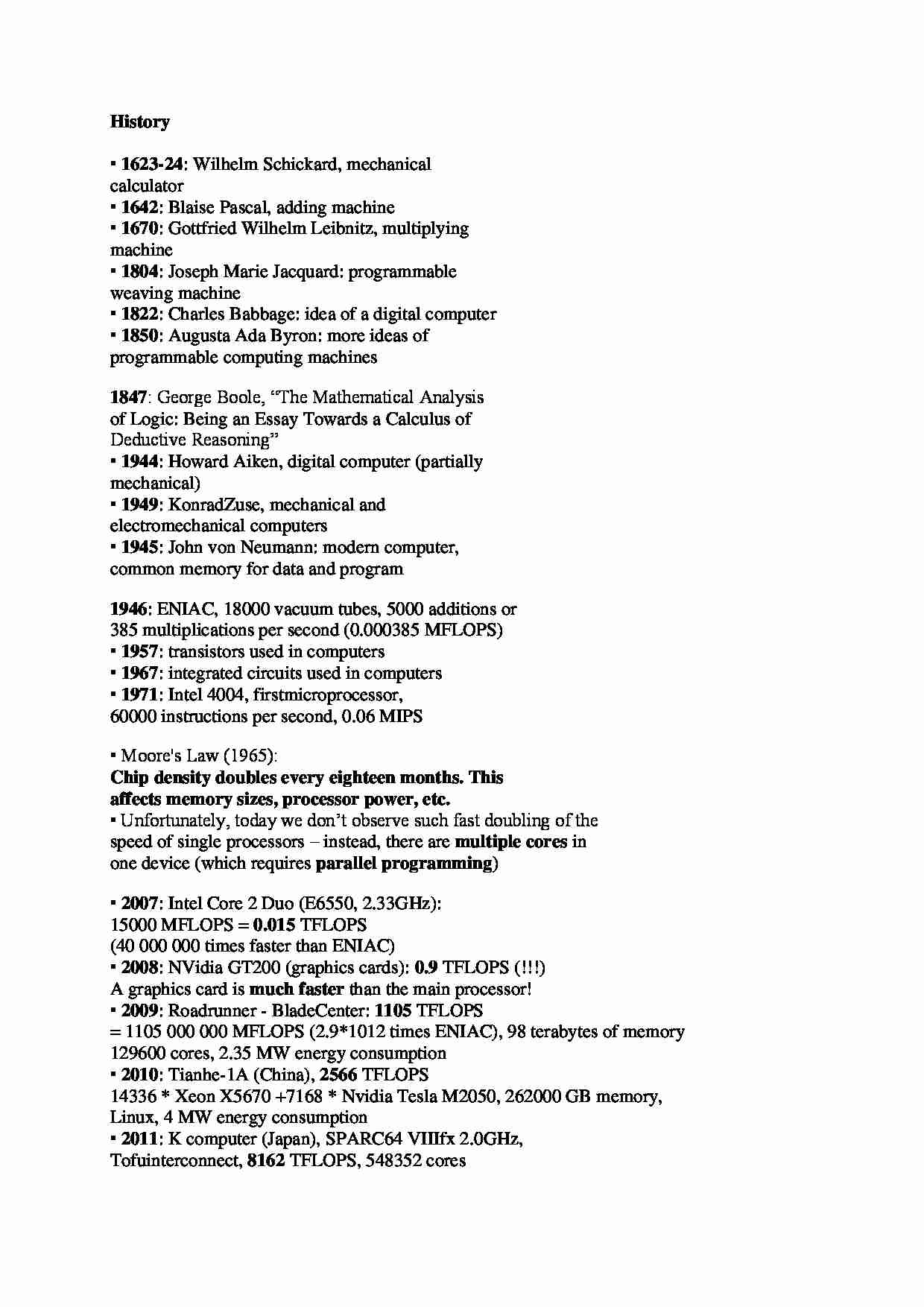
History • 1623-24 : Wilhelm Schickard, mechanical calculator • 1642 : Blaise Pascal, adding machine • 1670 : Gottfried Wilhelm Leibnitz, multiplying machine • 1804 : Joseph Marie Jacquard: programmable weaving machine • 1822 : Charles Babbage: idea of a digital computer • 1850 : Augusta Ada Byron: more ideas of programmable computing machines 1847 : George Boole, “The Mathematical Analysis of Logic: Being an Essay Towards a Calculus of Deductive Reasoning” • 1944 : Howard Aiken, digital computer (partially mechanical) • 1949 : Konrad Zuse, mechanical and electromechanical computers • 1945 : John von Neumann: modern computer, common memory for data and program 1946 : ENIAC, 18000 vacuum tubes, 5000 additions or 385 multiplications per second (0.000385 MFLOPS) • 1957 : transistors used in computers • 1967 : integrated circuits used in computers • 1971 : Intel 4004, first microprocessor, 60000 instructions per second, 0.06 MIPS • Moore's Law (1965): Chip density doubles every eighteen months. This affects memory sizes, processor power, etc. • Unfortunately, today we don't observe such fast doubling of the speed of single processors - instead, there are multiple cores in one device (which requires parallel programming ) • 2007 : Intel Core 2 Duo (E6550, 2.33GHz): 15000 MFLOPS = 0.015 TFLOPS (40 000 000 times faster than ENIAC) • 2008 : NVidia GT200 (graphics cards): 0.9 TFLOPS (!!!) A graphics card is much faster than the main processor! • 2009 : Roadrunner - BladeCenter: 1105 TFLOPS = 1105 000 000 MFLOPS (2.9*1012 times ENIAC), 98 terabytes of memory 129600 cores, 2.35 MW energy consumption • 2010 : Tianhe-1A (China), 2566 TFLOPS 14336 * Xeon X5670 +7168 * Nvidia Tesla M2050, 262000 GB memory, Linux, 4 MW energy consumption • 2011 : K computer (Japan), SPARC64 VIIIfx 2.0GHz, Tofu interconnect, 8162 TFLOPS, 548352 cores
... zobacz całą notatkę



Komentarze użytkowników (0)